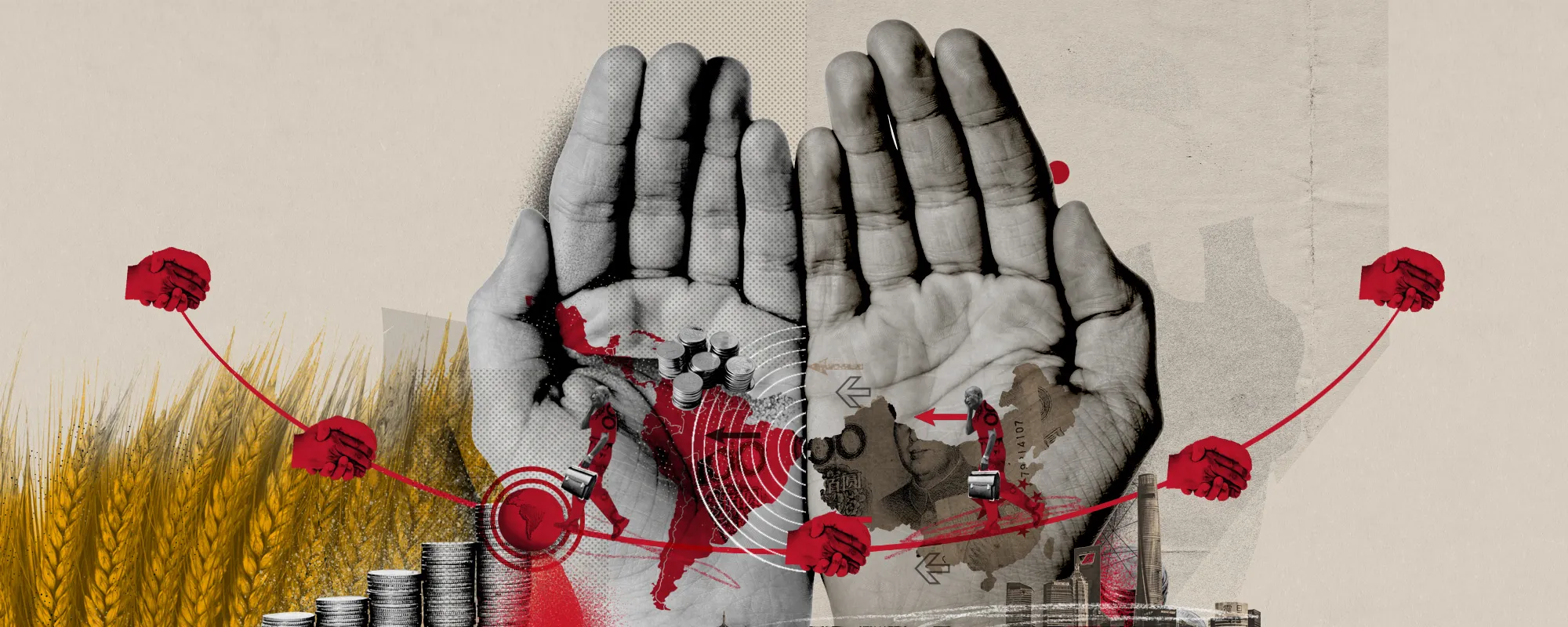China Democratizing Access to High-Tech Solutions Across the Global South

In 2019, Mozambique experienced severe flooding due to Cyclone Idai, which destroyed over 500,000 hectares of crops and washed away fisheries infrastructure, livestock assets, and grain stores. This situation affected the food security of around 99,000 people whose livelihoods depend mainly on food crops such as rice, wheat, maize, and sorghum.
However, with the help of a tailor-made agricultural remote sensing monitoring system designed for the country, the Mozambique government was able to promptly carry out flood impact monitoring and quickly bring the damage under control. The monitoring system, known as CropWatch, developed by the Aerospace Information Research Institute of the Chinese Academy of Science, provided invaluable data for post-flood damage assessment and effective disaster relief.
 Mozambique (l). National precipitation process line
Mozambique (l). National precipitation process line
 Mozambique (ll). Temperature change process line
Mozambique (ll). Temperature change process line
First launched in 1998, CropWatch utilizes remote sensing and ground observation data to assess crop growth, yield, and other related information at the national and global levels. Initially intended for domestic use, the system quickly gained popularity around the world with 160 countries currently relying on it for real-time monitoring of agricultural information.
Before the advent of CropWatch, most countries and regions lacked the necessary technology or resources to establish their own agricultural monitoring systems. Therefore, they have had to rely on those that were developed by the West to predict changes in the global food market with one major limitation: they do not allow these countries to access the raw data.

For these countries, CropWatch developed by China represents a new option. It combines various indicators such as rainfall, crop area, and temperature at the global, national, and regional levels, and leverages satellite and ground monitoring to analyze the agricultural conditions of countries that account for over 80% of the world’s food production.
More importantly, it’s an open system that allows users to access transparent information. According to the United Nations Food and Agriculture Organization (FAO), the biggest advantage of the system is that it can be customized, allowing countries to generate different indicators based on their specific needs. Stakeholders can also access the system through a cloud platform, significantly reducing software and hardware investment costs for developing countries utilizing this technology.
The FAO further emphasizes that improving information access is crucial for mitigating distortions in the global food market, and CropWatch “reduces fluctuations in the food market.”
CropWatch is just the tip of the iceberg of the digital transformation spearheaded by China that is sweeping across the Global South.
During the pandemic, several governments in Southeast Asia chose to distribute subsidies online. However, the lack of online identity verification and security risk control capabilities became a major obstacle in providing these services. To overcome this challenge, Bangladesh managed to remotely open accounts for 5 million households nationwide with the help of secure technology from China. This initiative allowed the government to effectively distribute aid to families who had lost their sources of income through the mobile payment platform BKash.
“The account authentication technology solutions provided by Chinese technology companies have greatly improved our situation,” said Kamal Quadir, CEO of bKash, Bangladesh’s electronic wallet company.
With the remote account opening system in place, the time required for account setup, which used to take at least five days, was significantly reduced. The entire process can now be completed in as fast as three minutes, thanks to secure and convenient authentication methods that ensure contactless fund distribution. This has greatly lowered the barriers for ordinary users to access digital services.
Furthermore, in countries like the Philippines, where there are over 30 different types of official identification documents, the challenge lies in accurately identifying individuals during the application process for an electronic wallet. Similarly, in Nigeria, while online applications are widespread, the prevalence of cyber fraud poses a constant threat. These issues have been effectively addressed through Ant Group’s platform, ZOLOZ.

Built on Ant Group’s extensive risk control experience, ZOLOZ enables online identity verification, which is crucial for the safe implementation of digital services. Electronic wallet platforms across Southeast Asian countries have adopted ZOLOZ’s solutions, allowing users to conveniently authenticate their identities by scanning their documents and taking photos with their mobile phones, eliminating the need for manual processing at offline locations.
In addition to addressing digital security issues, many overseas clients are seeking to leverage China’s leading internet technologies, including mobile technology and cloud computing, to create powerful technological engines for launching mobile internet services with better user experiences. One of these clients is Kenanga Investment Bank Berhad, Malaysia’s largest independent investment bank.
Using the mPaaS mobile development platform, Kenanga partnered with Ant Group to create Malaysia’s first “super app” centered around wealth. This new digital platform brings together the best products and services from Kenanga Investment Bank and its partners into a user-friendly mobile application. It provides users with a single view of their investment portfolio, including all accounts and assets, and allows them to easily explore new products and services.
Recently, the government of Sarawak state in Malaysia also announced the introduction of Ant Group’s self-developed all-in-one mobile development platform, mPaaS, and the digital identity authentication platform, ZOLOZ. This move aims to enhance the development efficiency, service reliability, and user experience of local digital government services in Sarawak state.

When it comes to embracing Chinese technology with open arms, there is no better example than Saudi Arabia. Under the guidance of Saudi Arabia’s “Vision 2030” initiative, which aims to actively develop a diversified economy, a series of favorable policies have been implemented to promote the construction of digital infrastructure. The government has committed to allocating a budget equivalent to 2.5% of the Gross Domestic Product (GDP) by 2040 to research and innovation in relevant fields.
Without a doubt, Chinese techs would play a central role in achieving this vision. The tech giant HUAWEI has invested $400 million in Saudi Arabia for the development of cloud service infrastructure.
Earlier this year, at the LEAP Technology Exhibition held in the Saudi capital Riyadh, Huawei showcased its Riyadh Intelligent Cortex solution. The solution incorporates various artificial intelligence technologies such as interactive human-computer interaction, spatio-temporal computing, holistic perception, and visual computing, creating a digital twin space for Riyadh. Users can interact with digital characters to learn about the culture and customs of the Saudi capital. In September of this year, Huawei also established its 30th data center globally in Riyadh, providing support for AI application software and Arabic language models.

Leading Chinese AI software company SenseTime has also embarked on business expansion in Saudi Arabia through collaborations with local enterprises. As early as 2021, SenseTime established a joint venture company called SenseTime MEA with the Saudi sovereign wealth fund PIF to provide innovative AI solutions for the Middle East, building a local AI ecosystem. Since then, they have implemented projects in smart tourism, smart cities, and more. This includes the creation of the futuristic “Riyadh Season,” the largest cultural and entertainment event in Saudi Arabia and the wider Middle East, as well as collaboration with the iconic King Abdullah Financial District (KAFD) project.
Furthermore, China and Saudi Arabia have deepened their cooperation in talent development. Huawei announced its plan to develop 200,000 developers in Saudi Arabia over the next five years. They are also working with 1,000 local partners to build joint solutions and support the growth of 2,000 local startups in Saudi Arabia.
Like Saudi Arabia, countries from the Global South are eager to ride the latest wave of 4th industrial revolution, and invariably, they see the immense opportunities brought by China, a rising technology powerhouse. The democratization of technologies in the developing world reminds us of the original promise of the tech revolution in the early days, that technologies will make the world more equal and afford us more freedom, not the opposite.





